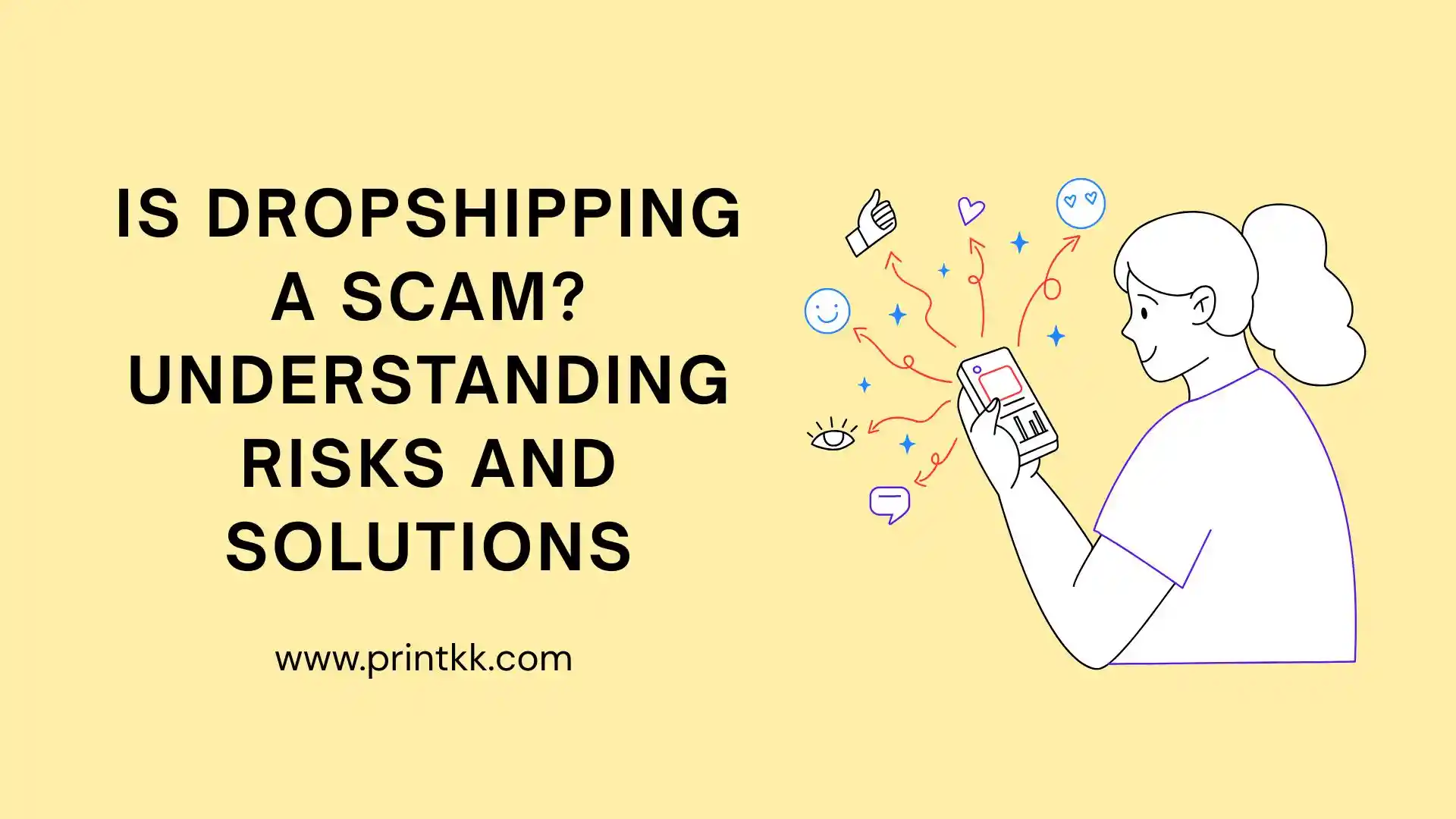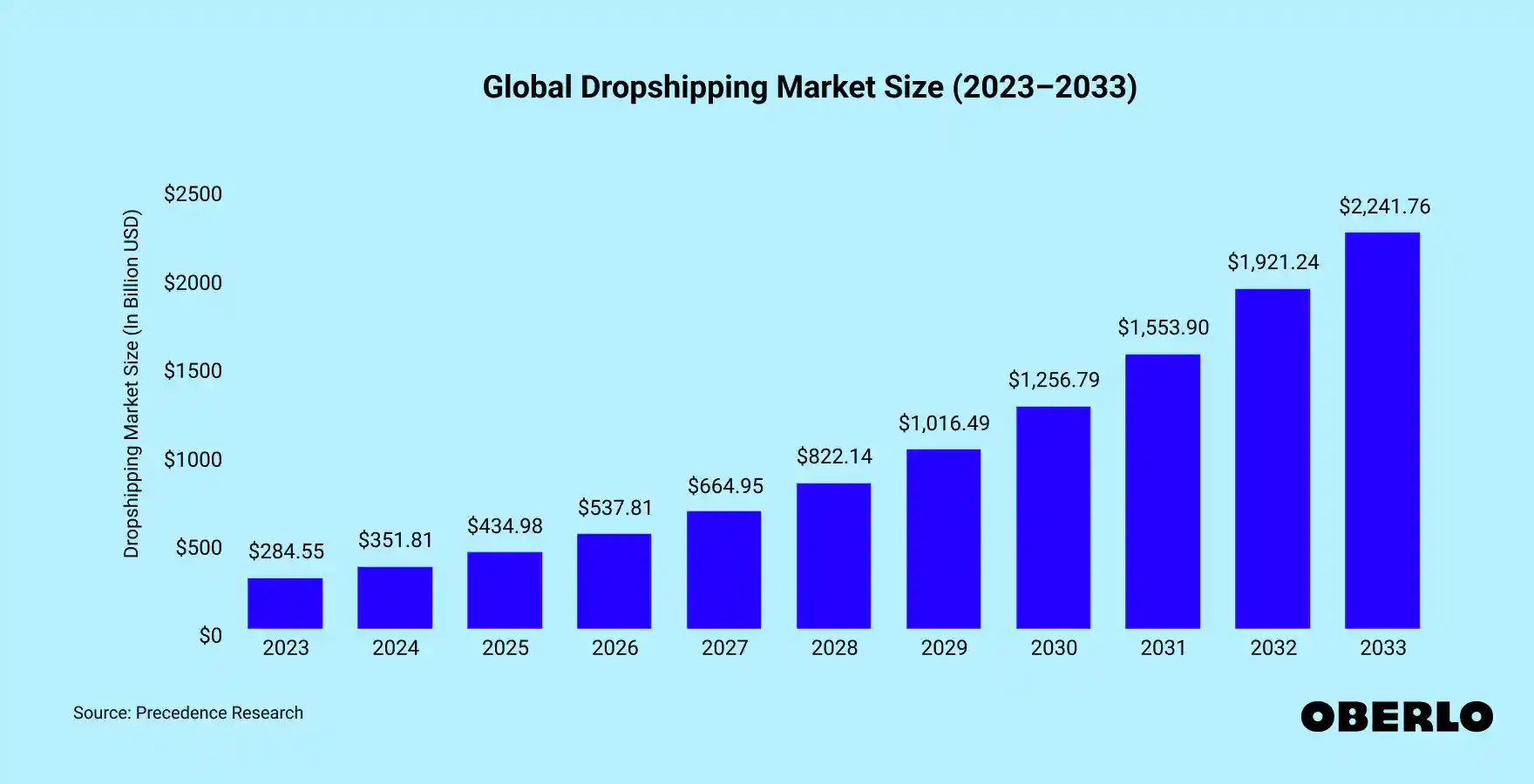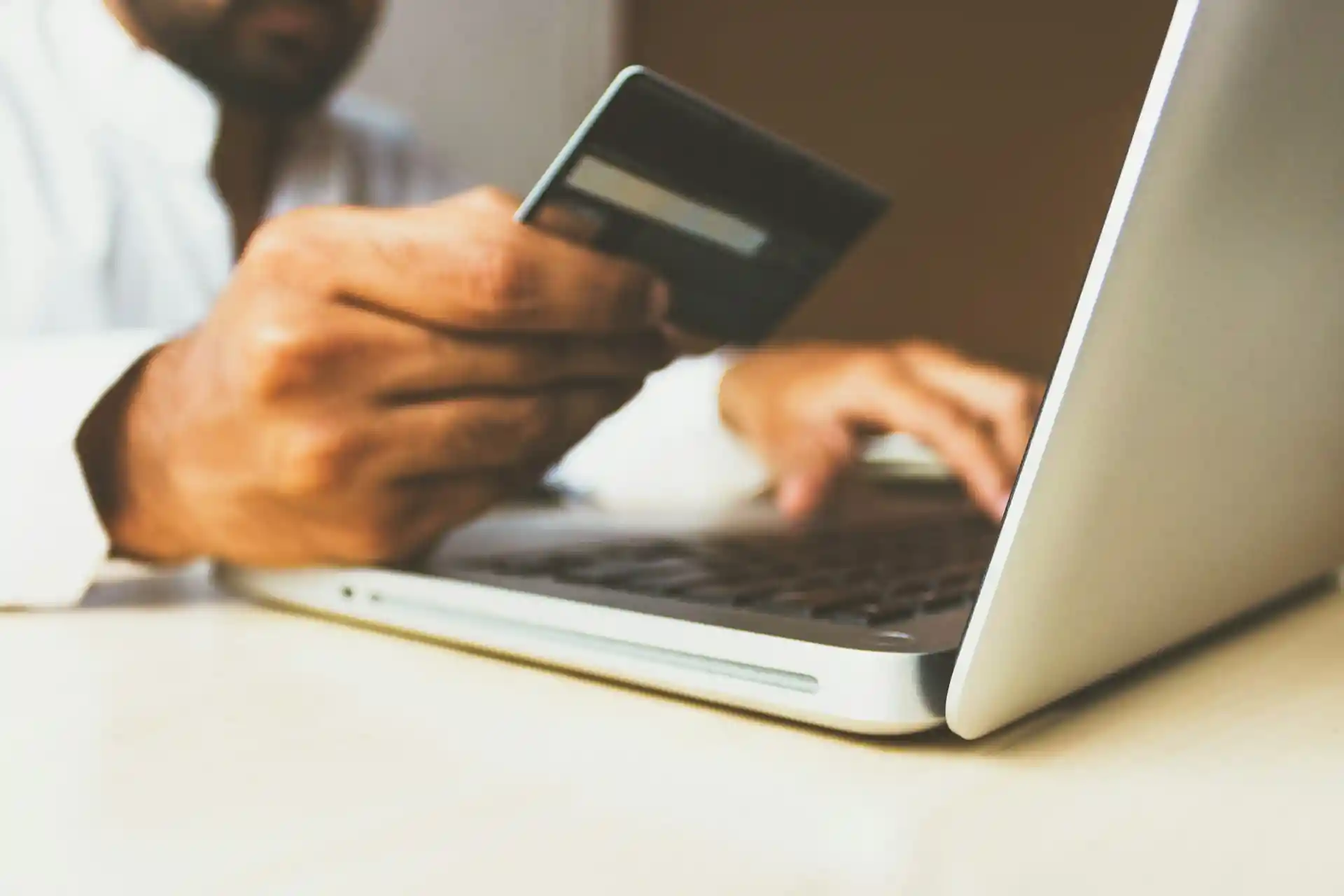
When you first hear about dropshipping, it often sounds too good to be true: sell products online without holding inventory and make money while someone else handles shipping.
But that raises the question many new entrepreneurs worry about—is dropshipping a scam? The truth is, dropshipping is a legitimate business model, but like any venture, it comes with risks and potential pitfalls.
In this article, we'll break down the common challenges, explain how scams happen, and share strategies to protect your store and profits.
What Exactly Is a Dropshipping Business?
A dropshipping business is a way to sell products online without keeping any inventory yourself.
Instead of buying stock upfront, you partner with suppliers who store and ship products directly to your customers. This means you can run a store from anywhere, with just a computer and an internet connection.
In a typical dropshipping setup:
- You list products on your online store.
- A customer places an order.
- Your supplier handles packaging and shipping.
You never touch the product, which lowers risk and upfront costs. But that also means your business depends heavily on your suppliers for quality and delivery speed.
The dropshipping market is growing fast. By 2026, it's expected to reach $537.8 billion, nearly double its 2023 value.
This growth shows how popular this model has become for new entrepreneurs looking for a flexible way to start selling online.
Dropshipping is simple in concept, but success comes from choosing the right products and reliable partners. Understanding how it works is the first step to building a profitable online business.

10 Dropshipping Scams to Watch Out For
1. Fake Supplier Websites
Some suppliers look perfect online with huge catalogs, but they won't ship your orders.
Before trusting anyone, try ordering a single product to test delivery and quality. If they ignore your questions or provide vague answers, it's a warning sign. Don't rely on a website that only shows flashy pictures.
2. Unrealistic Profit Promises
You'll see people claiming you can make thousands in a week. That rarely happens. Dropshipping requires ads, testing products, and refining your strategy.
Focus on learning the process rather than chasing big numbers. Expecting overnight success will only waste your time and money.
3. Paid Courses That Teach Little
Many courses sell the idea of secret shortcuts. Most of the time, they just summarize what's online for free.
Check if the course provides real examples, supplier contacts, or templates. If it doesn't, it won't save you months of trial and error. Look for value, not hype.
4. Ghost Stores
Some dropshipping stores exist just to collect payments. They might look professional but won't deliver.
A quick test order is the best way to avoid this. Check reviews carefully. If no one can confirm they received products, don't risk your money.
5. Counterfeit Products
Suppliers might promise branded or high-quality items but send cheap knockoffs. Selling these can hurt your reputation and get you refunds requests constantly.
Ask for product samples before listing. You want something that looks good, feels good, and won't get returned immediately.
6. Hidden Fees
Some platforms or suppliers add extra fees after the sale. These can quickly eat your profits.
Always read the fine print, ask for all costs upfront, and calculate your margins realistically. Missing a small fee now can turn a profitable product into a losing one.

7. Fake Reviews
Not all five-star reviews are real. Some stores create fake feedback to appear trustworthy. Look at timing, detail, and patterns.
Genuine reviews mention small flaws, shipping times, or quality issues. If every review is perfect, assume skepticism and verify before working with them.
8. Refund Scams
Some sellers make it extremely difficult to get your money back. They delay responses, ask for unnecessary proof, or ignore you completely.
Always use payment methods with buyer protection, like PayPal. A secure payment method is your best shield against losing money.
9. Misleading Advertising
Ads often promise free shipping, gifts, or lightning-fast delivery. Reality is often slower or completely different.
Double-check shipping times and supplier policies. If the offer seems too generous, investigate before committing. Honest advertising will match what customers actually get.
10. Pyramid or MLM-Style Programs
Some programs focus on recruitment instead of selling real products. You shouldn't make most of your income from bringing in people.
Stick to suppliers and business models where your earnings come from actual sales. Selling products is sustainable; recruiting isn't.
How to Avoid Dropshipping Scams (As a Buyer)
Check Seller Reputation
Before you buy anything, always check the seller's history. Look at reviews, ratings, and how long they've been active.
Beware of stores with very few reviews or overly positive feedback that seems fake. If you can't find information about the seller online, that's a warning sign.
Trustworthy sellers are usually easy to research and have clear contact details.
Read Product Descriptions Carefully
Many dropshipping scams trick buyers with misleading product info. Make sure you read descriptions thoroughly.
Look for details about material, size, shipping time, and return policies. If the description is vague or too good to be true, it probably is.
Take your time to compare with other stores. Being careful here can save you from disappointment and wasted money.
Use Secure Payment Methods
Always pay through secure and trackable methods like credit cards or PayPal.
Avoid direct bank transfers or sending money via apps that don't protect buyers.
Secure payments give you a chance to dispute charges if the product never arrives or isn't as described.
Remember, staying safe online is just as important as choosing the right product.

How to Avoid Dropshipping Scams (As a Seller)
1. Vet Your Suppliers Like You Would a Business Partner
Think of your supplier as part of your team. You don't just pick the first name you see. Look at their track record, check reviews, and ask for references from other sellers.
Ask specific questions: how fast do they ship, what happens if a product is damaged, and do they offer batch photos?
A reliable supplier will be upfront and provide details you can verify.
2. Test Everything Before Scaling
Before committing to big orders, order samples for yourself. Inspect the quality, packaging, and shipping speed.
This isn't just about the product—it's about understanding what your customer will actually receive.
Small tests save you from big headaches later and give you real stories to include in your product descriptions.
3. Set Clear Rules and Protect Your Shop
Make shipping times, returns, and refunds crystal clear. Put policies where your customers can see them, and stick to them.
Use secure payment systems that give you recourse if something goes wrong. Clarity protects both you and your buyers and makes it easier to handle disputes without losing time or money.

Is Buying a Dropshipping Course Really Worth It?
1. The Phenomenon: Courses Everywhere
The internet is full of dropshipping courses. Creators often claim that "even beginners can make money quickly."
This makes it feel like taking a course is the only shortcut to success. You might start wondering: do these courses really work, or are they just marketing tricks designed to get your money?
Some courses can be helpful, but many just repeat the same advice. The key is figuring out if a course will give you real results or just hype.
2. Judging the Value
Most courses cover basic steps you can find for free online, such as:
- Opening an online store
- Finding suppliers
- Running simple ad campaigns
What really sets a course apart is whether it gives practical, up-to-date guidance.
A good course should answer your specific questions and show you proven methods you can actually apply.
Look for instructors who share real examples, case studies, or step-by-step instructions. If a course just rehashes free tutorials, it won't save you much time.
3. The Takeaway
Courses are not absolutely necessary. You can definitely start dropshipping using free resources if you're willing to spend time learning.
However, a high-quality course can speed up your learning and help you avoid common mistakes. Before buying, make sure to:
- Check if the instructor has real achievements
- Avoid courses that promise overnight riches
- Confirm that the material is practical and not just hype
A dropshipping course can be useful, but it's not a magic ticket. Your effort, testing, and careful learning matter more than any course you purchase.
Read More:
The Future After Dropshipping: Building a Brand
Why You Might Move Beyond Dropshipping
Dropshipping can feel easy at first, but the truth is competition is fierce, and profit margins keep shrinking.
Slow shipping and inconsistent product quality can hurt your store's reputation. If you want long-term growth, relying only on product arbitrage won't work.
Building a recognizable brand is the step that allows you to grow sustainably and keep customers coming back.
What Branding Means (Including POD)
Branding isn't just a logo or a store name. It's about creating unique products that customers remember. Print-on-Demand (POD) is a great way to start:
- Test your packaging, graphics, and styles at low cost
- Offer customized items that stand out from generic products
- Build trust by giving customers a memorable experience
Through POD, you can experiment without large upfront costs and start shaping a brand identity that sticks.

Custom Large Mug (15oz) (Made in USA)(Submit Shipping Label) - Print-On-Demand - PrintKK
How to Transition From Dropshipping to a Brand
Here's how you can make the shift:
- Pick a niche you can stick with long-term
- Use POD to test product styles, designs, and customer preferences
- Create basic brand assets like logos, colors, packaging, and homepage visuals
- Improve the buying experience: faster shipping through local POD suppliers and reliable support
- Share your story using content marketing to show your brand's values and design process
These steps help you move from selling random products to building a cohesive brand that customers recognize and trust.
The Benefits of Branding
Branding changes the game. Custom products are harder to copy, giving you a clear advantage. It helps you:
- Increase customer loyalty and repeat purchases
- Improve profit margins with unique offerings
- Build a sustainable business that can scale and accumulate real value
Shifting from dropshipping to branding isn't instant, but it makes your business more resilient and gives you control over growth. A brand lasts longer than a product trend.
So, Is Dropshipping a Scam?
You might still wonder, is dropshipping a scam? The answer is no. It is a legitimate business model, but it comes with risks. You need to choose reliable suppliers, check product quality, and manage customer expectations.
Dropshipping can be a starting point. It lets you test products and learn about running an online store. Over time, you can move toward building a brand. Use customization and clear policies to earn trust and loyalty.
Focus on smart decisions and consistency. With the right approach, you can create a sustainable business. Dropshipping is not a shortcut, but a stepping stone to long-term growth.
FAQs
Are all dropshipping businesses scams?
Not all dropshipping businesses are scams. Many are legitimate, but some take shortcuts or mislead customers. You need to research suppliers carefully and verify reviews before trusting any store or opportunity.
Can dropshipping be a profitable business model?
Dropshipping can be profitable, but it requires planning, marketing, and consistency. Your earnings depend on the products you choose, your marketing skills, and how well you manage orders and customer service.
What are the common red flags of a dropshipping scam?
Watch for suppliers or stores with fake reviews, unclear contact information, unusually low prices, or exaggerated promises. If a deal feels too easy or customers report poor experiences, proceed with caution.
Can you make $1,000 a month dropshipping?
Yes, some people earn $1,000 per month, but it takes testing products, running ads, and refining strategies. It's achievable with consistent effort, smart product selection, and careful management of costs and orders.
Where do most dropshippers fail?
Most dropshippers fail due to poor product choices, high competition, lack of marketing skills, and neglecting customer service. Focusing on quality products, reliable suppliers, and building trust can help avoid common pitfalls.










 Global Shipping
Global Shipping





























